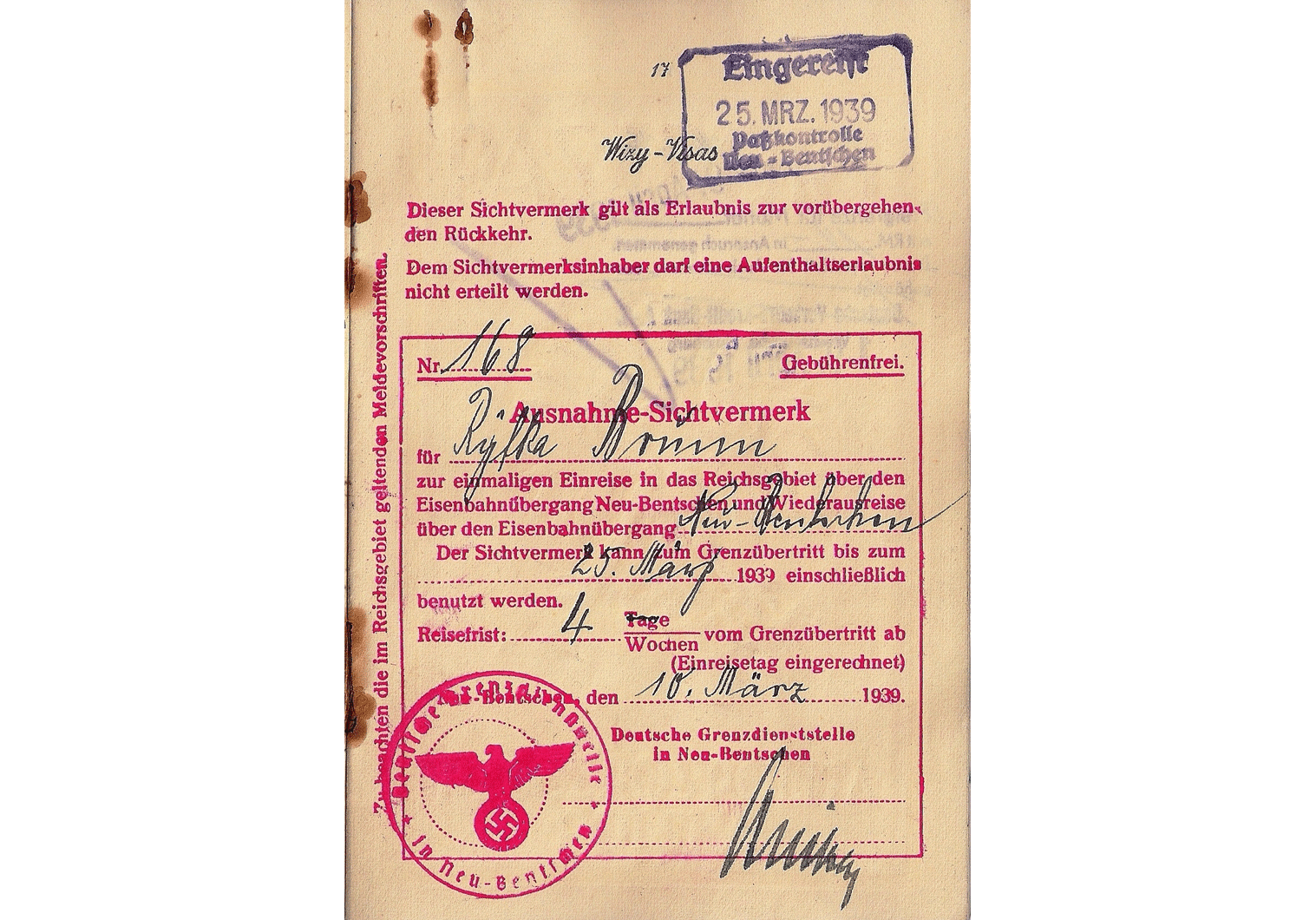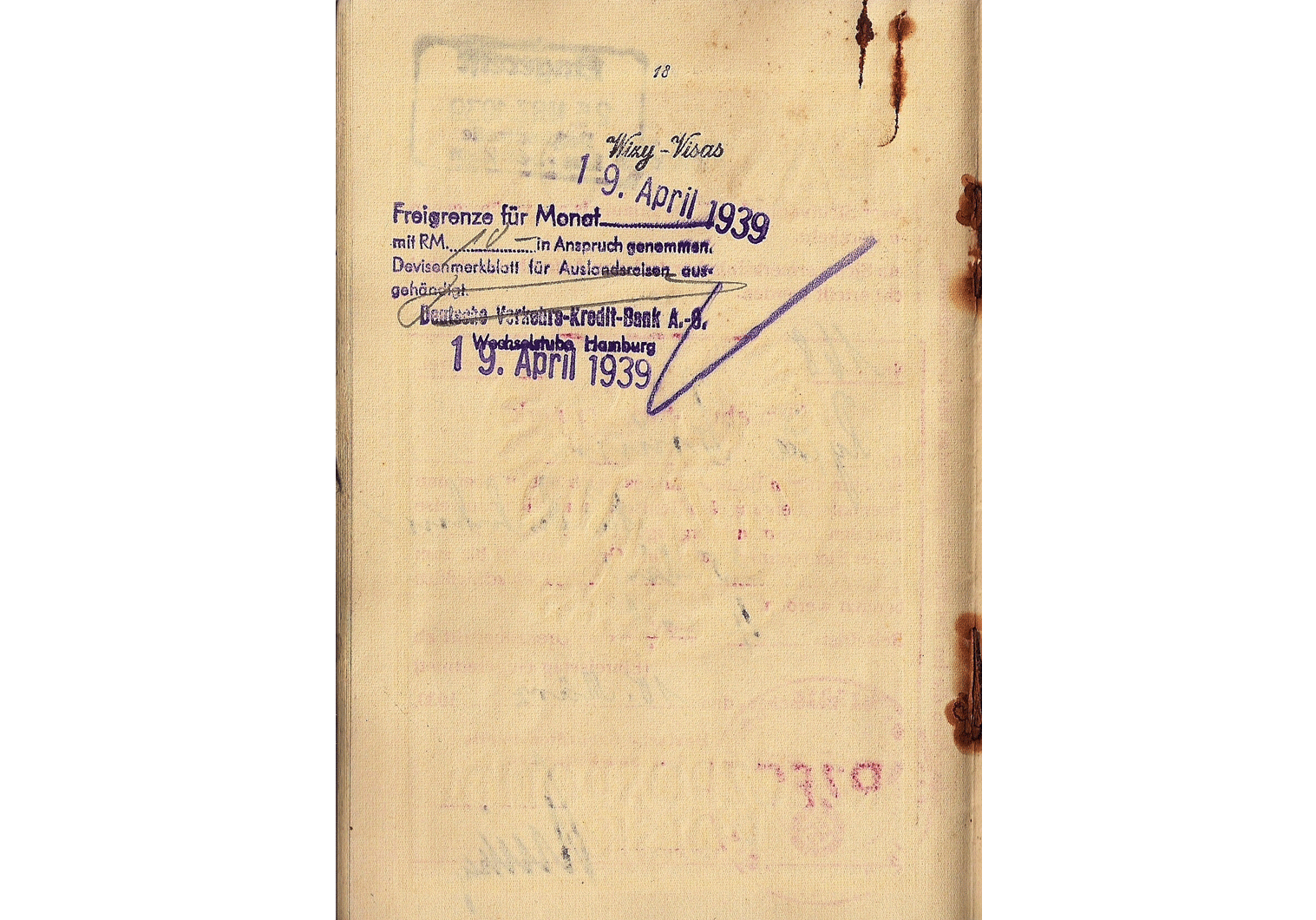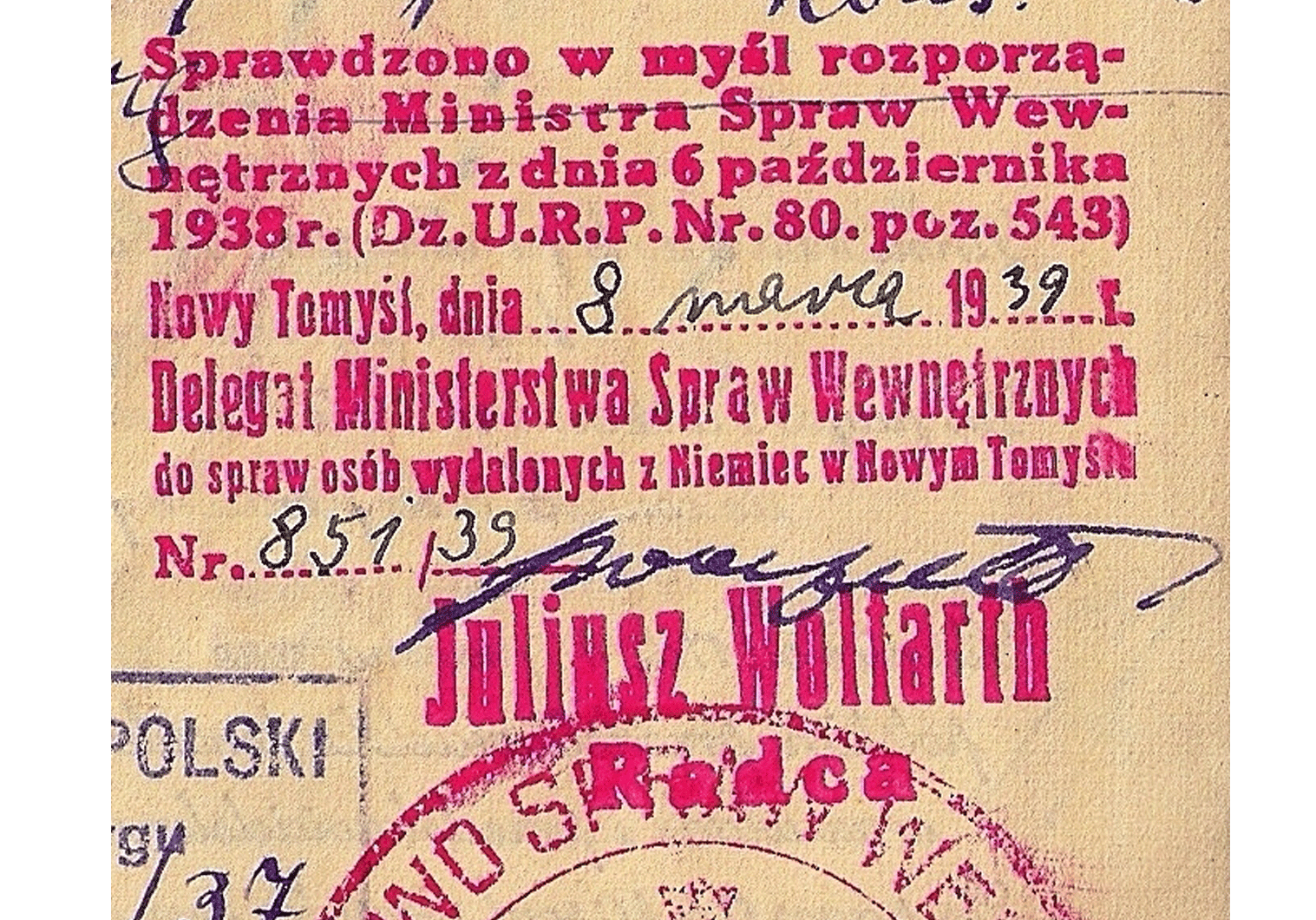Kristallnacht related passport
A Jewess that was expelled to Zbaszyn in 1938.
The events that ended up with Kristallnacht on November 9th started with an anti-Semitic action that was carried out by the SS and Gestapo the previous month.
After Germany annexed Austria in March of 1938, the Polish government feared that close to 20,000 Austrian Jews (holding Polish passports) would flee and return back home, thus, in order to prevent this from happening, they declared that all such passports of those living for over 5 years abroad would be invalid, and the new law would be put into effect after March 31st. But nothing concrete was done about this, not until the September Munich agreement, this is when the above mentioned government decided that all passports would be accepted, for those wishing to return, if they went through registration and a special amendment was placed inside of them; any passport without that special annotation would not permit the holder to return back to Poland after October 31st.
Germany, fearing that close to 50,000 of Polish Jews who were living in the country will remain permanently, and possibly as refugees and as a burden, decided to act and prevent this from taking place: the government left the issue to the hands of the SS & Gestapo, who began forcibly to expel the Jews to the Polish border around Zbaszyn (Neu Bentschen in German) on October 27th.
The passport here is directly connected to those events and was actually marked inside as the holder being deported from Germany! Though there is no extensive use or many visas inside, the few annotations and applied stamps clearly indicate that the holder, Ryfka Brunn, was expelled on October 29th via the German-Polish border crossing at Zbaszyn/Neu Bentschen.
Issued by the Polish consulate in Hamburg July 6th 1937 and was valid for two years. Franciszek Mejor was the passport issuer at the consulate. Ryfka was born in 1878 and her profession was indicated as dressmaker. She did not make any use of the passport until over a year later, where it is marked as crossing the border back into Poland on October 29th. This on its own is no indication of any wrong doing being committed upon her. But, after examining closely the stamps on page 7, then it all becomes clear:
The page is hand-stamped by the Ministry of Interior with the following text:
Delegat Ministerstwa Spraw Wewnetrznych do spraw osob wydalonych z Niemiec w Nowy Tomysi.
This roughly would translate to “Delegate of the Ministry of Internal Affairs for the people expelled from Germany in New Tomysi”. The location of this small town is not that far from Zbaszyn (Neu Bentschen).
The passport has one applied visa inside, issued by the German border control office ALSO located at Neu Bentschen. Looking closely at the visa, we can see that it is NOT a regular issued visa for Germany. The visa was pre-dated for 1939 and is free-of-charge: it was issued to those who were expelled and needed to return, briefly, back to Germany. The visa, or Exception-visa, was issued for temporary return to Germany via the railway crossing, and exit at the same location when leaving. At the heading we can find these two sentences:
Dieser Sichtvermerk gilt als Erlaubnis zur vorübergehenden Rückkehr.
Dem Sichtvermerksinhaber darf eine Aufenthaltserlaubnis nicht erteilt werden.
Roughly meaning that the visa was good for temporary return (to Germany) and that the holder of this visa was not permitted to be granted a residence permit. Valid for 4 weeks. Issued to Ryfka on March 10th. She may have had to take care of personal issues relating to her or her family (those being deported did not have the time to finalize their affairs in Germany) and thus had to return back for this one trip, on March 25th and returning back to Poland, after paying the border fee of 10 RM on the 19th at Hamburg, on April 20th.
Further examination did not reveal any more information on her whereabouts after her returning back to Poland. There is another small annotation on the top right section of the inner front jacket of the passport, dated April 24th, but not clear enough to be made out, sadly. We can only hope that she managed to find a way out to safety before war broke out half a year later…
Among those who were deported to Poland where the family members of Herschel Grynszpan. He was the young teenager that shot the German diplomat Ernst von Rath. Upon his death, Nazi Germany launched the events later to be known as Kristallnacht on Novermber 9-10th of 1938.
Smaller image source: Wikipedia.
Thank you for reading “Our Passports”.








